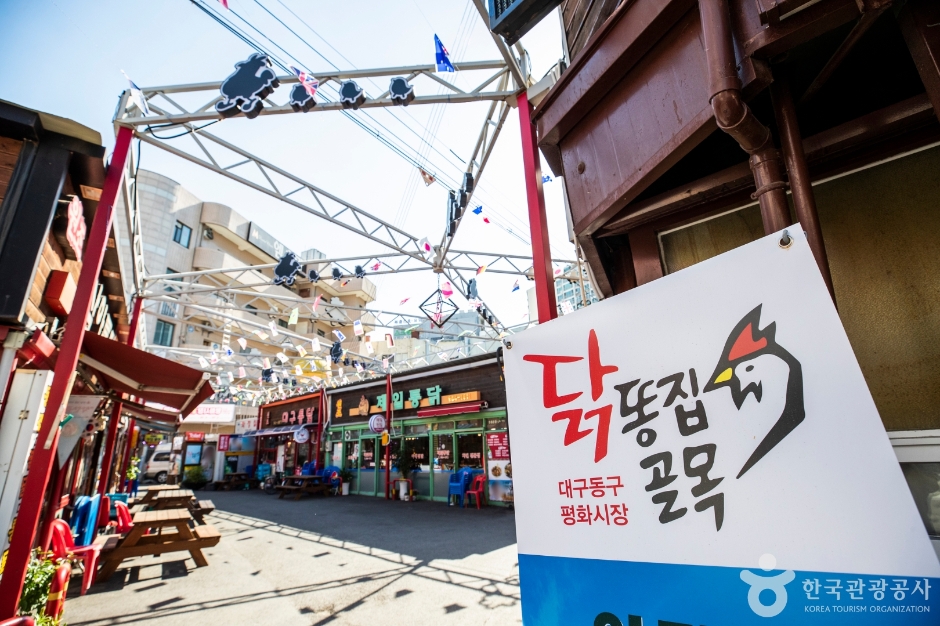Lotte Himart - Chimsan Branch [Tax Refund Shop] (롯데하이마트 침산점)
2.0Km 2024-04-18
598, Jungang-daero, Buk-gu, Daegu
-
Olive Young - Daegu Chimsan Branch [Tax Refund Shop] (올리브영 대구침산)
2.2Km 2024-04-17
124, Chimsan-ro, Buk-gu, Daegu
-
Dowoo Health Care (주식회사 도우티앤비)
2.5Km 2025-10-23
(2nd Floor), 7 Bongdeok-ro 1-gil, Nam-gu, Daegu
With a branch in Hanoi, Vietnam, we have been engaged in the medical tourism business for Vietnamese patients since 2010, specializing in attracting patients from Hanoi, Danang, and Ho Chi Minh City. We also lead medical volunteer activities in Vietnam with Korean hospitals every year, and our local subsidiary in Vietnam is licensed to import Korean medical devices from Vietnam. We are evolving into a company that specializes not only in medical tourism but also in total healthcare. Since 2010, we have been leading cooperation between hospitals in Vietnam and Korea through hospital-to-hospital program exchanges, physician training, etc.
Olive Young - Daegu Beomeo Branch [Tax Refund Shop] (올리브영 대구범어)
2.5Km 2024-04-17
2379, Dalgubeol-daero, Suseong-gu, Daegu
-
Pyounghwa Market Dakttongjip Street (대구 평화시장 닭똥집 골목)
2.6Km 2023-11-17
6 Ayang-ro 9-gil, Dong-gu, Daegu
+82-53-662-4072
Pyounghwa Market Dakttongjip Street was established with the opening of Samatongdak in 1972, and is a street specializing in chicken gizzard dishes. It is said that the dish was first offered as an affordable dish to accompany drinks, favored by blue-collar laborers who gathered at the early labor market in front of Pyounghwa Market in the 1970s. Inexpensive and delicious, the dish has remained popular.
Benetton - Hyundai Department Store Daegu Branch [Tax Refund Shop] (베네통현대아울렛대구)
2.7Km 2024-04-23
454, Dongdaegu-ro, Dong-gu, Daegu
-
It Michaa - Hyundai Outlets Daegu Branch [Tax Refund Shop] (잇미샤 현대아울렛대구)
2.7Km 2024-04-22
454, Dongdaegu-ro, Dong-gu, Daegu
-
GGPX - Hyundai City Outlets Daegu Branch [Tax Refund Shop] (GGPX현대아울렛대구)
2.7Km 2024-04-23
454, Dongdaegu-ro, Dong-gu, Daegu
-
Space M - Hyundai Outlets Daegu Branch [Tax Refund Shop] (스페이스M 현대아울렛 대구점)
2.7Km 2024-04-22
454, Dongdaegu-ro, Dong-gu, Daegu
-
![Lotte Himart - Chimsan Branch [Tax Refund Shop] (롯데하이마트 침산점)](http://tong.visitkorea.or.kr/cms/resource/25/2883925_image2_1.jpg)
![Olive Young - Daegu Chimsan Branch [Tax Refund Shop] (올리브영 대구침산)](http://tong.visitkorea.or.kr/cms/resource/36/2888036_image2_1.jpg)

![Olive Young - Daegu Beomeo Branch [Tax Refund Shop] (올리브영 대구범어)](http://tong.visitkorea.or.kr/cms/resource/32/2884132_image2_1.jpg)

![Benetton - Hyundai Department Store Daegu Branch [Tax Refund Shop] (베네통현대아울렛대구)](http://tong.visitkorea.or.kr/cms/resource/96/2883896_image2_1.jpg)
![It Michaa - Hyundai Outlets Daegu Branch [Tax Refund Shop] (잇미샤 현대아울렛대구)](http://tong.visitkorea.or.kr/cms/resource/98/2883898_image2_1.jpg)
![GGPX - Hyundai City Outlets Daegu Branch [Tax Refund Shop] (GGPX현대아울렛대구)](http://tong.visitkorea.or.kr/cms/resource/01/2883901_image2_1.jpg)
![Space M - Hyundai Outlets Daegu Branch [Tax Refund Shop] (스페이스M 현대아울렛 대구점)](http://tong.visitkorea.or.kr/cms/resource/84/2883884_image2_1.jpg)
 English
English
 한국어
한국어 日本語
日本語 中文(简体)
中文(简体) Deutsch
Deutsch Français
Français Español
Español Русский
Русский